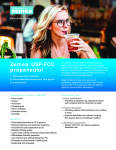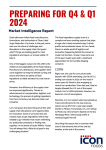Sweet and sour: Social media reveals consumer perceptions of sweeteners

The Lansing, Michigan-based social media research firm examined social perceptions of sugar substitutes including aspartame, sucralose, stevia and sugar alcohols, as well as sugar-free products, in 38,000 social media posts in various outlets: Twitter, Facebook, blogs, comments, videos, forums, and mainstream news.
“Social media perceptions are fueling a whole new form of consumer research,” said co-founder and director of analytics for Loudpixel Allie Siarto. “We get to examine a huge number of unbiased conversations outside of a focus group, and we have a chance to see exactly how people are sharing these perceptions with their friends online.”
The researchers found that sucralose was driving more social media conversations than any other sugar replacer – 44% of the total – and sucralose-based Splenda was the most discussed sugar substitute product, mentioned in 35% of product-related sugar replacement conversations.
As for positive and negative perceptions, stevia was viewed most positively among all the sugar substitutes, with 73% of social media conversations about stevia in relation to health discussing it in a positive light. Meanwhile, in conversations about aspartame, 91% were negative, the researchers found.
“These social media findings could become significant to how new products are made and marketed,” Siarto said.
She told FoodNavigator-USA: “Aspartame seems to be the one that people are most passionate about and the one that they want to talk to their friends about.”
She said that just one percent of social media conversations about aspartame mentioned studies that have supported the sweetener’s safety.
“We have worked with a few different brands which are using this type of research to decide what kinds of ingredients they use in foods,” Siarto said, adding that from a consumer perception standpoint, stevia may have the greatest potential for growth.
The full report is available to download here.
















